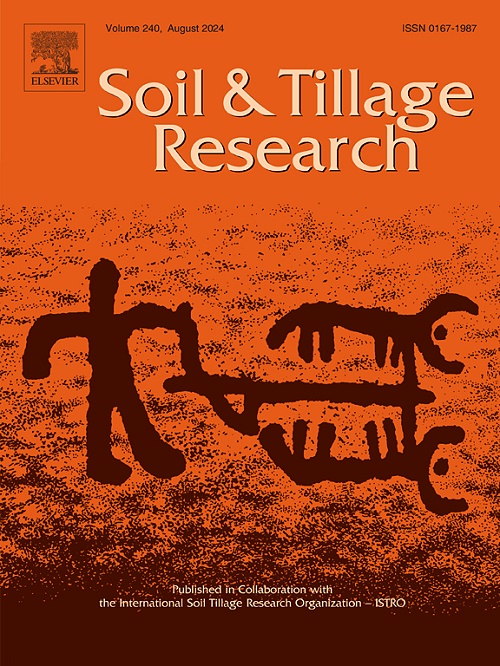Effects of infiltrated rain during the construction stage on the deformation law of a sulphated gravel embankment in regions with seasonally frozen soil
IF 6.1
1区 农林科学
Q1 SOIL SCIENCE
引用次数: 0
Abstract
The sulphated gravel embankment in seasonal frozen soil regions may experience deformation problems such as salt expansion, frost heave, and settlement under rainfall percolation conditions and changes in environmental temperature, affecting considerably its normal use. In response to these issues, relying on the renovation and expansion project of an international airport in northwest China, this paper used a self-designed temperature control testing device and conducted indoor constant temperature tests and freeze–thaw cycle tests using on-site natural embankment filling, and conducted numerical simulation tests using the COMSOL Multiphysics software programme. This paper investigated the characteristics of temperature variation, moisture, salt migration, and deformation of sulphated gravel in seasonal frozen soil regions under rainfall percolation conditions. The results indicated that under environmental temperature changes in the range of −10–25 °C, the temperature at which sulphated gravel salt expansion and frost heave occur was approximately −8 °C, and the deformation sensitive depth range from 0 to 200 mm. The moisture and salt contents of soil samples would experience a sudden increase due to rainfall percolation, with the sudden increase in moisture in the soil sample with a salt content of 0.9 % lagging that of the soil sample with a salt content of 0.5 % by one freeze–thaw cycle. Rainfall percolation significantly enhanced the settlement deformation of sulphated gravel during freeze–thaw cycles. The primary causes of soil deformation include the upward migration of water vapour, the downward percolation of moisture, and rainfall. These factors contribute to the destruction of the soil structure and alter the contact modes between soil particles, resulting in soil loosening and settlement deformation.
求助全文
约1分钟内获得全文
求助全文
来源期刊

Soil & Tillage Research
农林科学-土壤科学
CiteScore
13.00
自引率
6.20%
发文量
266
审稿时长
5 months
期刊介绍:
Soil & Tillage Research examines the physical, chemical and biological changes in the soil caused by tillage and field traffic. Manuscripts will be considered on aspects of soil science, physics, technology, mechanization and applied engineering for a sustainable balance among productivity, environmental quality and profitability. The following are examples of suitable topics within the scope of the journal of Soil and Tillage Research:
The agricultural and biosystems engineering associated with tillage (including no-tillage, reduced-tillage and direct drilling), irrigation and drainage, crops and crop rotations, fertilization, rehabilitation of mine spoils and processes used to modify soils. Soil change effects on establishment and yield of crops, growth of plants and roots, structure and erosion of soil, cycling of carbon and nutrients, greenhouse gas emissions, leaching, runoff and other processes that affect environmental quality. Characterization or modeling of tillage and field traffic responses, soil, climate, or topographic effects, soil deformation processes, tillage tools, traction devices, energy requirements, economics, surface and subsurface water quality effects, tillage effects on weed, pest and disease control, and their interactions.
 求助内容:
求助内容: 应助结果提醒方式:
应助结果提醒方式:


